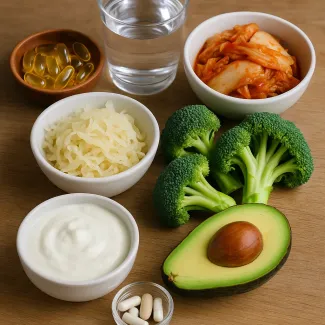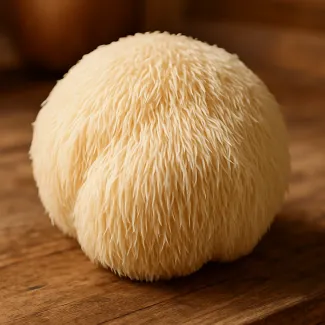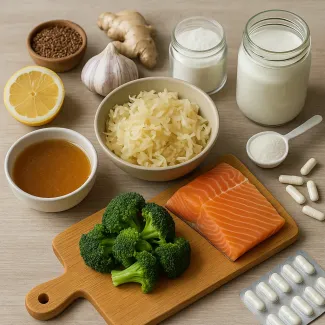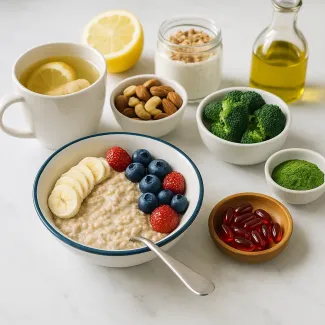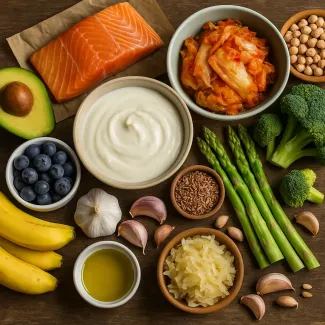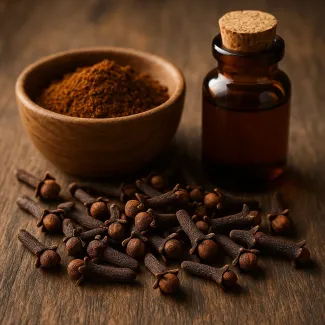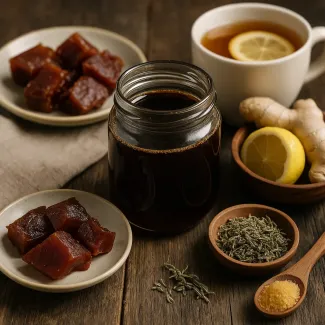
Discovering the Truth About Burnt Sugar and Its Impact on Wellness
Traditional Uses and Modern Perspectives on Burnt Sugar in Daily Health
Burnt sugar, often associated with rich caramel tones and traditional confections, has long been more than just a flavorful addition in the kitchen. From folk medicine to home remedies, its transformation through heat gives it characteristics that extend beyond sweetness. This article explores the health-related benefits, potential risks, and practical ways to use burnt sugar at home. Whether you’re intrigued by its role in respiratory health, digestion, or its soothing properties in teas and syrups, we dive deep into this often-overlooked ingredient.
What Is Burnt Sugar and How Is It Made?
The caramelization process explained
Burnt sugar is created by heating regular white sugar until it melts and changes color, moving from golden amber to deep brown. This process, known as caramelization, causes chemical changes that alter both its taste and composition. As sugar heats, its sucrose content breaks down into glucose and fructose, which then react further to create complex aromatic compounds and a bitter-sweet flavor.
Common forms of burnt sugar
- Liquid burnt sugar: often used in syrups or added to beverages
- Solid burnt sugar chunks: used in traditional medicine or desserts
- Burnt sugar powder: created by grinding solidified sugar and used for natural flavoring or in herbal blends
Traditional Remedies Using Burnt Sugar
Soothing sore throats and coughs
In various cultures, burnt sugar syrup has been used as a base for cough remedies. Its slightly bitter, smoky notes combined with warm water or herbal infusions can help soothe an irritated throat and reduce the frequency of dry coughing.
Relieving mild digestive discomfort
Some home practitioners believe that burnt sugar in small amounts may stimulate digestion and alleviate mild stomach cramps, especially when combined with warm spices like cardamom or clove. These combinations are typically brewed into warm teas.
Energy and blood sugar regulation myths
A common but misleading belief is that burnt sugar may regulate blood sugar levels. In reality, burnt sugar still contains carbohydrates, and though its composition has changed, it should not be used as a substitute for regulated glycemic support.
Potential Health Benefits of Burnt Sugar
Mild antioxidant properties
The process of burning sugar creates compounds such as melanoidins, which may have antioxidant-like effects. These compounds can potentially help reduce oxidative stress in the body, although this effect is modest and not a substitute for richer antioxidant sources like berries or green tea.
Supporting home remedies
In folk remedies, burnt sugar is frequently paired with herbs to enhance flavor and increase the palatability of bitter medicines. This pairing can make natural preparations more effective by encouraging consistent use.
Respiratory support in cold climates
In colder regions, warm drinks with a burnt sugar base are used as expectorants to support the lungs during seasonal infections. These drinks often include honey, lemon, and ginger, making them both functional and pleasant to consume.
Risks and Considerations of Using Burnt Sugar
Potential for overconsumption
Even though the taste changes with caramelization, burnt sugar is still a sugar product. Consuming it in excess may contribute to the same health concerns as regular sugar, including:
- Weight gain
- Elevated blood glucose
- Tooth decay
- Insulin resistance
Formation of acrylamide
Prolonged heating of sugar, especially at high temperatures, can lead to the formation of acrylamide, a substance associated with potential health risks when consumed in large quantities over time. This reinforces the importance of moderation when using burnt sugar for any purpose.
How to Make Burnt Sugar at Home
Basic burnt sugar syrup recipe
Ingredients:
- 100 g (½ cup) white sugar
- 120 ml (½ cup) water
Instructions:
- Place the sugar in a heavy-bottomed saucepan.
- Heat over medium heat until it melts and turns dark amber.
- Slowly add water (it may sputter), stirring continuously.
- Simmer until fully dissolved into a syrup.
This syrup can be stored in a glass jar and used for up to two weeks.
Safety tips for preparation
- Always use a well-ventilated area
- Avoid inhaling fumes directly
- Do not allow the sugar to burn completely black, as this increases bitterness and risk of acrylamide formation
Practical Ways to Use Burnt Sugar at Home
Burnt sugar ginger tea
Combine 1 tsp of burnt sugar syrup with hot water, grated fresh ginger, and lemon. This is a comforting drink for winter colds or after heavy meals.
DIY throat lozenges
Melt burnt sugar with honey and thyme extract, then pour into molds to create simple, natural sore throat candies.
Boosting herbal preparations
Add a small amount of burnt sugar syrup to bitter herbal teas like artichoke or dandelion to enhance taste without using refined sweeteners.
Burnt Sugar in Global Traditions
Caribbean and African herbal blends
In regions like Jamaica or parts of West Africa, burnt sugar is added to herbal tonics to create balance between bitterness and sweetness. It’s also part of traditional syrups used to cleanse the respiratory tract.
South Asian culinary medicine
In Ayurveda, burnt sugar (often part of herbal decoctions) is believed to enhance digestive fire, although modern perspectives recommend cautious use.
European folk use
In parts of Eastern Europe, burnt sugar candies were traditionally given to children during winter months to alleviate colds and promote comfort.
Comparing Burnt Sugar to Other Natural Sweeteners
Burnt sugar vs. molasses
- Molasses contains minerals like iron and calcium
- Burnt sugar lacks these nutrients but may have a richer aroma
Burnt sugar vs. honey
- Honey offers antibacterial properties
- Burnt sugar is purely flavor-based, with little biological activity
Burnt sugar vs. maple syrup
- Maple syrup has zinc and manganese
- Burnt sugar may be preferable when a roasted flavor is desired
Who Should Avoid Burnt Sugar?
People with metabolic conditions
Individuals with diabetes, insulin resistance, or prediabetes should limit any type of sugar, including burnt sugar, even if used in traditional remedies.
Young children
While often used in cough remedies, burnt sugar should be avoided in large quantities for toddlers and infants due to risk of sugar dependency and dental concerns.
Pregnant individuals
No specific studies exist, but it’s best to consult a healthcare provider before using burnt sugar in herbal preparations during pregnancy.
Frequently Asked Questions About Burnt Sugar
Can burnt sugar be used as a cough syrup base?
Yes, when mixed with herbal teas, honey, or lemon, it can make a soothing syrup for mild coughs.
Does burnt sugar contain any vitamins?
No, burnt sugar contains no significant vitamins or minerals unless it’s mixed with nutrient-rich ingredients.
Is burnt sugar safe for daily use?
In small, occasional amounts, yes. However, regular consumption is discouraged due to its high sugar content.
Can burnt sugar be added to coffee?
Absolutely. A small amount of burnt sugar syrup gives coffee a smoky caramel note and can be a refined alternative to plain sweeteners.
Natural Ingredients to Combine with Burnt Sugar
Ginger
Combats inflammation and enhances respiratory benefits when used with burnt sugar in teas.
Thyme
Used in herbal cough formulas, thyme extract and burnt sugar make a powerful soothing combination.
Lemon
Balances the sweetness of burnt sugar and adds vitamin C for immune support.
Turmeric
Burnt sugar can reduce the bitterness of turmeric-based drinks, making them more palatable while preserving their anti-inflammatory effects.
Nutritional Overview of Burnt Sugar
Although burnt sugar has a unique taste and cultural relevance, it remains nutritionally minimal. Here’s a general profile per tablespoon (15 ml):
- Calories: ~60
- Carbohydrates: ~15 g
- Sugars: ~15 g
- Fiber, protein, fat: negligible
- Vitamins/minerals: none
Its primary function is flavor enhancement and home remedy support—not nutrition.
Burnt Sugar in Beauty and Skincare DIY
Burnt sugar exfoliating scrubs
A paste of burnt sugar, honey, and a bit of coffee grounds creates a natural exfoliant with a warming sensation, ideal for winter skincare routines.
Aromatherapy and mood
The deep caramel aroma of burnt sugar when used in warm infusions may have relaxing effects, enhancing a sense of comfort and nostalgia.
Storage and Shelf Life
- Liquid burnt sugar: Store in a sterilized glass jar in the fridge (up to 2 weeks)
- Solid burnt sugar chunks: Keep in a cool, dry place, away from humidity
- Avoid plastic containers for hot burnt sugar; allow to cool before storage
Burnt Sugar as a Cultural Ingredient With Wellness Value
The resurgence of interest in traditional, home-based wellness has brought ingredients like burnt sugar into the spotlight. While not a cure-all, its flavor profile, history, and compatibility with natural remedies make it a valuable element in everyday wellness for those who appreciate both culinary tradition and holistic care.
